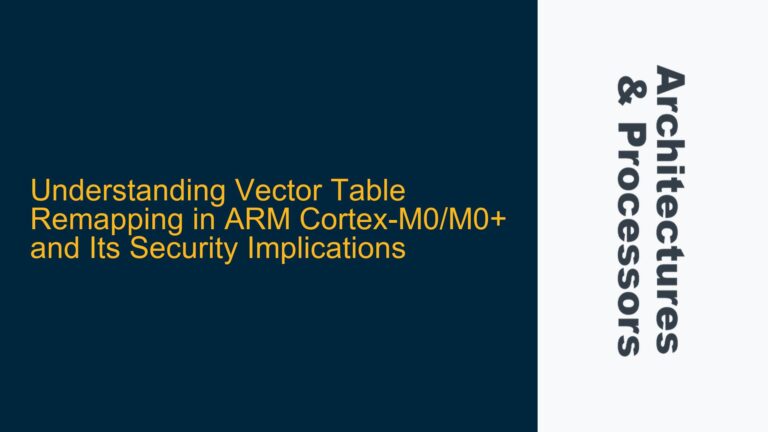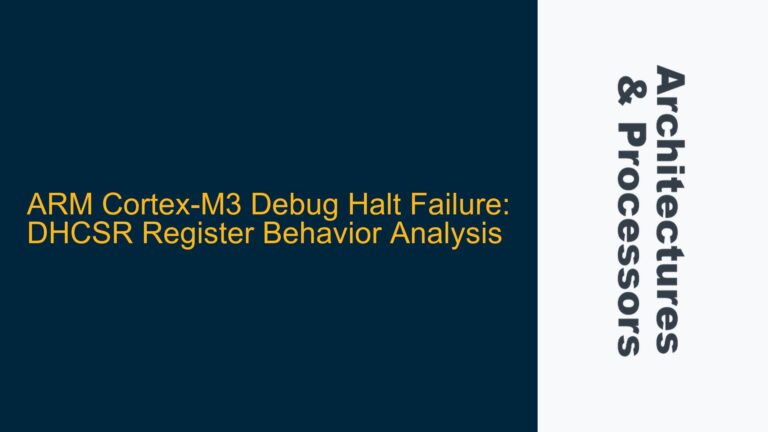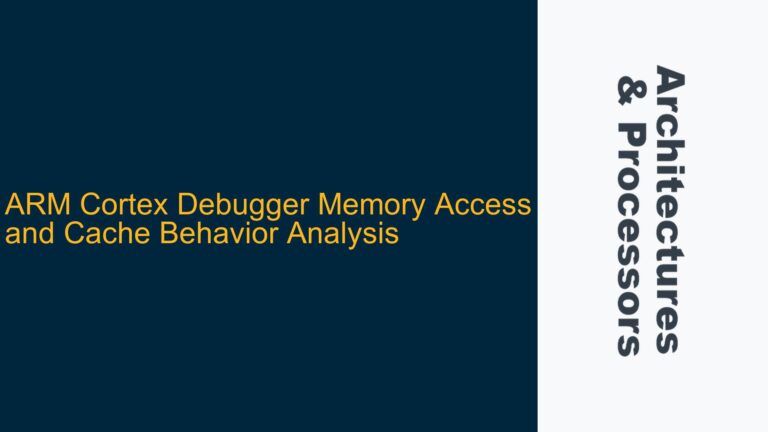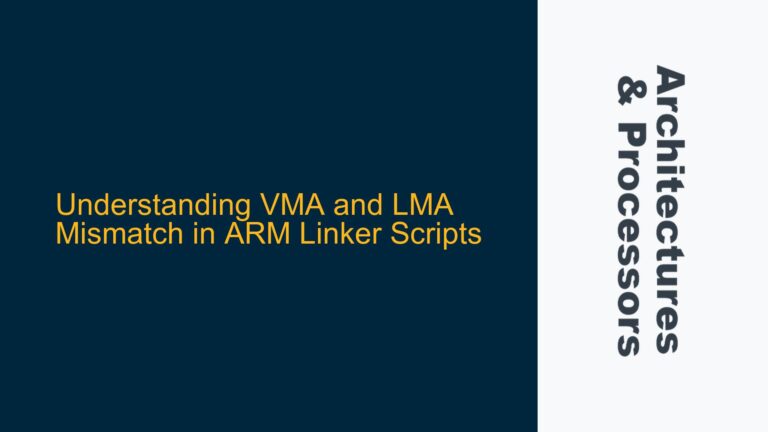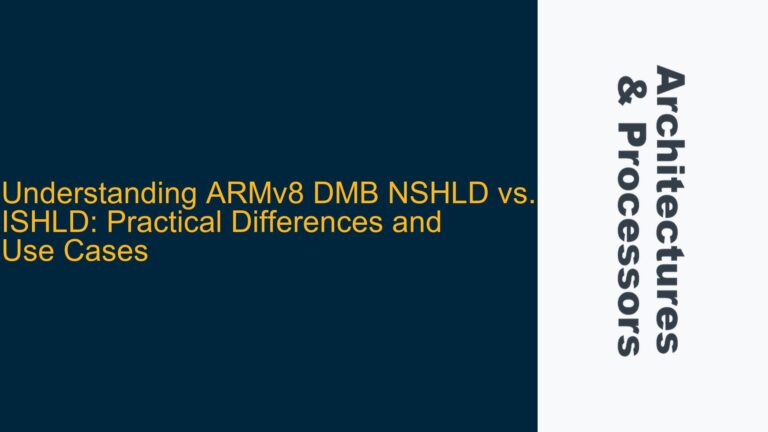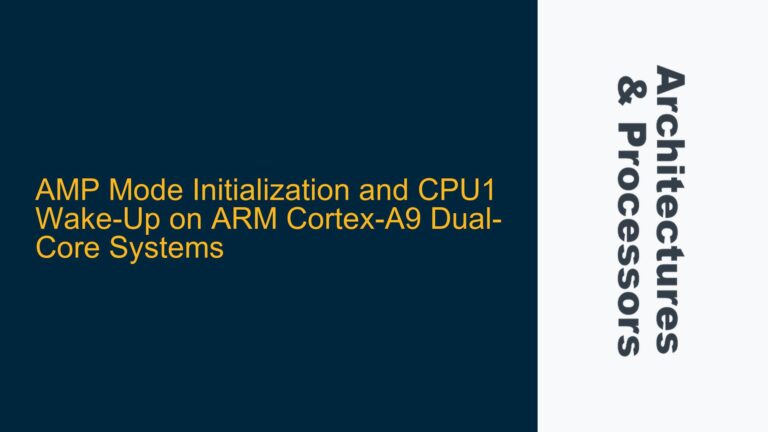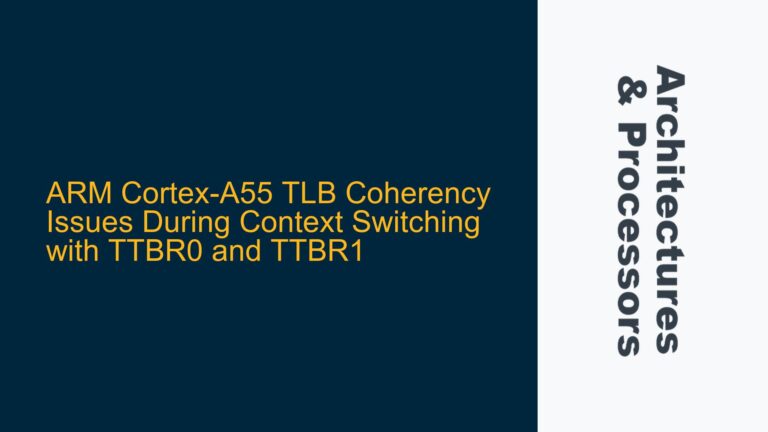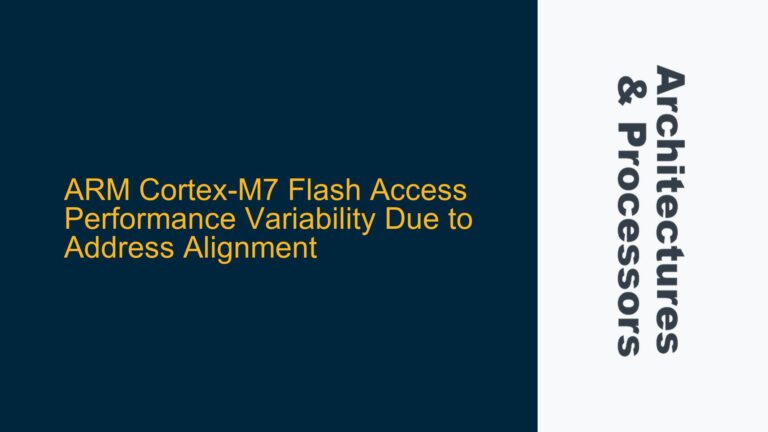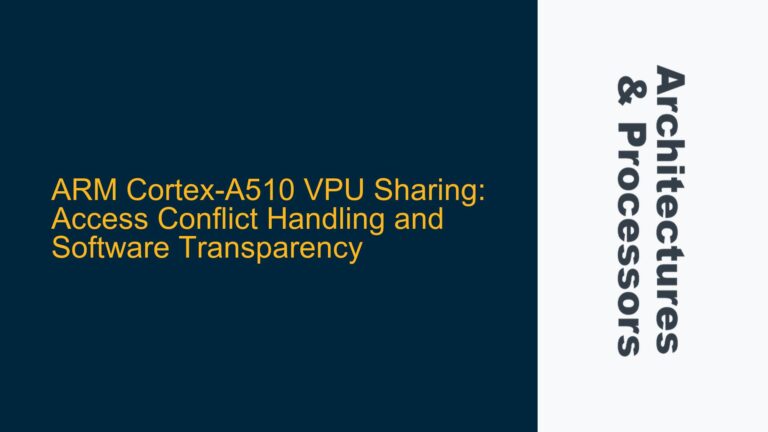Vector Table Remapping in ARM Cortex-M0/M0+ and Its Security Implications
Vector Table Remapping in ARM Cortex-M0/M0+: Functionality and Security Concerns Vector table remapping is a feature available in the ARM Cortex-M0+ processor, allowing the relocation of the vector table from its default address at 0x0 to a new address specified in the Vector Table Offset Register (VTOR). This feature is not present in the Cortex-M0,…
